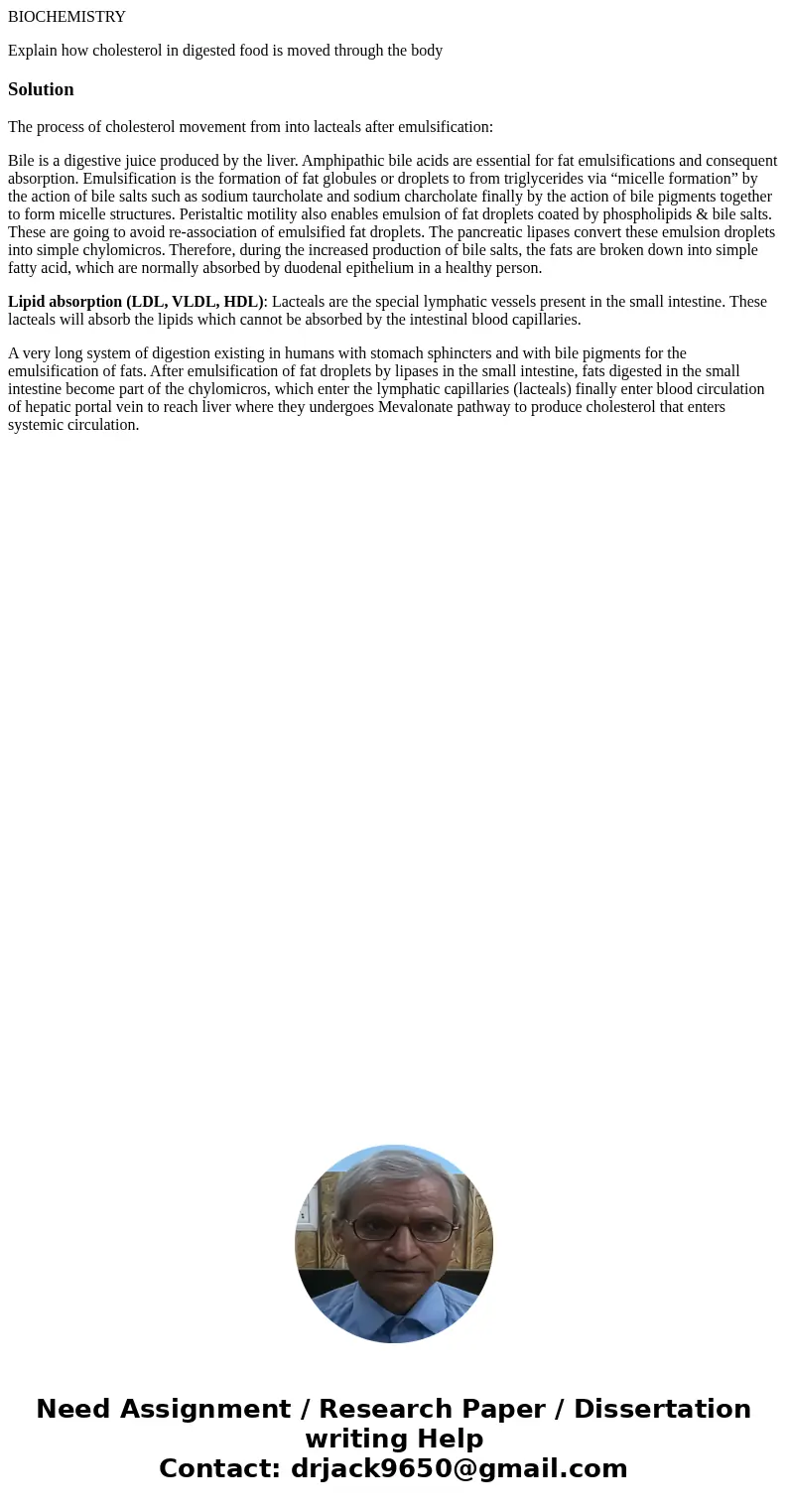BIOCHEMISTRY Explain how cholesterol in digested food is mov
BIOCHEMISTRY
Explain how cholesterol in digested food is moved through the body
Solution
The process of cholesterol movement from into lacteals after emulsification:
Bile is a digestive juice produced by the liver. Amphipathic bile acids are essential for fat emulsifications and consequent absorption. Emulsification is the formation of fat globules or droplets to from triglycerides via “micelle formation” by the action of bile salts such as sodium taurcholate and sodium charcholate finally by the action of bile pigments together to form micelle structures. Peristaltic motility also enables emulsion of fat droplets coated by phospholipids & bile salts. These are going to avoid re-association of emulsified fat droplets. The pancreatic lipases convert these emulsion droplets into simple chylomicros. Therefore, during the increased production of bile salts, the fats are broken down into simple fatty acid, which are normally absorbed by duodenal epithelium in a healthy person.
Lipid absorption (LDL, VLDL, HDL): Lacteals are the special lymphatic vessels present in the small intestine. These lacteals will absorb the lipids which cannot be absorbed by the intestinal blood capillaries.
A very long system of digestion existing in humans with stomach sphincters and with bile pigments for the emulsification of fats. After emulsification of fat droplets by lipases in the small intestine, fats digested in the small intestine become part of the chylomicros, which enter the lymphatic capillaries (lacteals) finally enter blood circulation of hepatic portal vein to reach liver where they undergoes Mevalonate pathway to produce cholesterol that enters systemic circulation.

 Homework Sourse
Homework Sourse